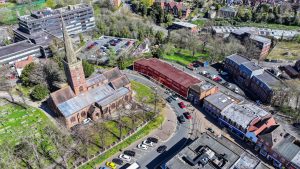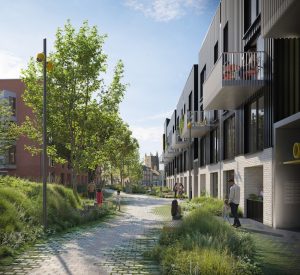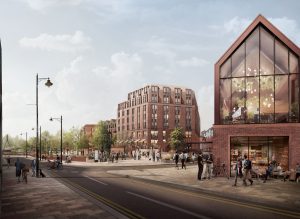Wolverhampton branded worst city for empty shops

WOLVERHAMPTON city centre was today named as having the highest number of empty shops of any major retail centre in the country.
Data published today reveals almost a quarter of retail units in the city are vacant and property experts said a chronic lack of investment had left the city unable to compete with neighbouring areas when it comes to its retail and leisure provision.
More choice and better services are offered in Birmingham and at the Merry Hill shopping centre, BNP Paribas Real Estate has said.
The criticism is a further blow to the city’s prestige after it was last year labelled the fifth worst city in the world by travel guide Lonely Planet.
Today’s comments follow the publication of a new report by the Local Data Company to the British Property Federation’s Retail Summit which shows that the decline of Britain’s high streets has continued with one in five shops standing empty across town centres in the Midlands, Kent and the North East.
Of the country’s large retail centres, Wolverhampton has been hit the worst, with 23.9% of its shops standing empty.
Commenting on the figures, Niall Cassidy, director of Birmingham retail lease advisory at BNPPRE, said: “Wolverhampton has continued to be blighted by long term voids for a number of years, primarily due to its inability to compete with neighbouring towns and cities that offer a more comprehensive retail and leisure provision and therefore attract a higher footfall.
“Birmingham is 30 minutes away by train and the Bullring (Birmingham), Touchwood (Solihull) and Merry Hill (Brierley Hill) shopping centres continue to evolve and offer even more choice to shoppers from all over the West Midlands.”
Consumers were demanding more from their shopping trips and new mixed use schemes where there are cinemas, restaurants and bars offered people a better experience and therefore lured shoppers in from a wider area, he added.
“Landlords such as Hammerson at Highcross (Leicester) are keen to invest in these mixed use regional schemes and to revitalise existing centres and due to a lack of investment Wolverhampton has been unable to compete,” said Mr Cassidy.
Elsewhere, Bradford, Middlesborough and Sheffield followed closely behind the Black Country city, while Margate topped the table of medium sized centres with 27.2% of shops empty.
The report shows vacancies have continued to increase over the last two quarters, although at a lesser rate that before.
According to data collected between July and December 2009, 12.4% of shops stand empty across Great Britain – an increase of 25% on June 2009. In the first half of 2009 vacancies increased by 100%.
According to LDC’s survey, which covered more than 700 town centres across the UK, overall shop vacancy has very nearly doubled in England and Wales since the end of 2008.
All regions saw a jump in vacancies by the 2009 mid-year figures, but these rates have now moderated significantly.
Northern regions have suffered most, with the North East particularly badly hit at 14%. The South and East, including London, saw a 33% increase in vacancy rates in the second half of 2009, with average vacancy at just around 9%.
In total, vacancy rates across the South and East have increased 190% since the peak of the market in September 2007. In the Midlands, the second half of 2009 saw a 46% rise in vacancies while Wales and the South West saw an 18% rise over the same period, with the average now just below 10% in the South West.








